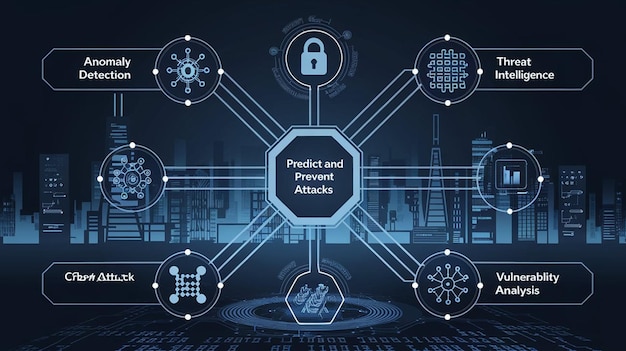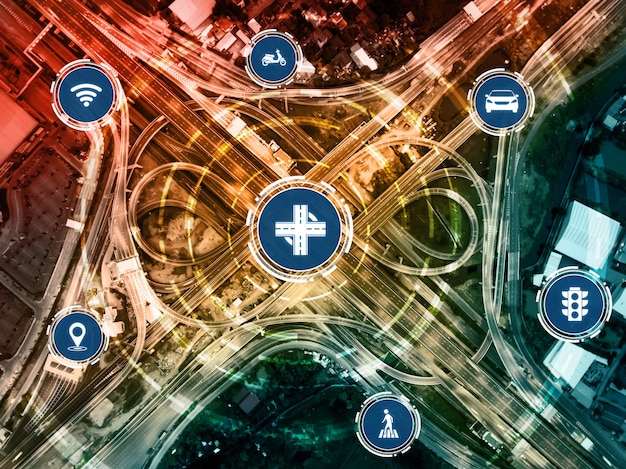US Government’s Cybercrime Plan: New Strategies and Resources

The US government is bolstering its defenses against cybercrime through comprehensive new strategies and dedicated resources aimed at protecting critical infrastructure, personal data, and national security from evolving digital threats.
In an increasingly interconnected world, where digital infrastructure underpins almost every aspect of daily life, the specter of cybercrime looms large. From state-sponsored attacks to individual ransomware assaults, the threats are diverse and relentlessly evolving. This critical challenge has prompted a strategic and robust response from national governments worldwide. But what exactly is The US Government’s Plan to Combat Cybercrime: New Strategies and Resources? This article will delve into the multifaceted approach the United States is adopting to safeguard its digital frontiers, exploring how new policies, enhanced capabilities, and collaborative efforts are shaping the future of cybersecurity within its borders and beyond.
< The Evolving Landscape of Cyber Threats in the US
The digital age has ushered in unprecedented convenience and connectivity, but it has also opened new avenues for malicious actors. The landscape of cyber threats facing the United States is dynamic and complex, ranging from sophisticated state-sponsored espionage to opportunistic criminal enterprises. These threats target not only government agencies and critical infrastructure but also businesses and individual citizens, highlighting the pervasive nature of digital dangers.
Recent years have seen a surge in ransomware attacks, supply chain compromises, and data breaches. These incidents underscore the vulnerability of even robust systems and the need for continuous adaptation in defensive strategies. The financial sector, healthcare institutions, and energy grids are particularly attractive targets for cybercriminals due to the sensitive nature of their data and operations.
The rise of ransomware and supply chain attacks
Ransomware, a type of malicious software that encrypts data and demands payment for its release, has become a significant disruption across various sectors. These attacks often exploit human error through phishing emails or unpatched vulnerabilities in systems, leading to substantial financial losses and operational downtime. The growing sophistication of ransomware groups, some with ties to hostile nation-states, presents a formidable challenge to law enforcement and cybersecurity professionals.
- Ransomware gangs increasingly target critical infrastructure.
- Payments often made in cryptocurrency, complicating tracing efforts.
- Recovery is costly, often exceeding the ransom demand itself.
Geopolitical implications of cyber warfare
Beyond financial motives, state-sponsored cyber-attacks pose a direct threat to national security. These can involve espionage, intellectual property theft, and attempts to disrupt democratic processes or critical services. The attribution of these attacks is often difficult, leading to complex geopolitical tensions and the need for international cooperation in defense and deterrence.
- Foreign adversaries seek to undermine economic stability.
- Cyber-attacks can precede or accompany conventional military action.
- International norms and agreements are struggling to keep pace with evolving threats.
Understanding these diverse threat vectors is the first step in formulating an effective defense. The US government recognizes that a static approach is insufficient against an enemy that constantly innovates. Therefore, its strategies are designed to be agile and forward-looking, addressing both current vulnerabilities and emerging challenges.
Establishing a Unified Front: Key Policy Shifts and Strategic Directives
Recognizing the fragmented nature of previous cyber defense efforts, the US government has moved towards a more unified and comprehensive strategy. This involves not only new policy directives but also a re-evaluation of existing frameworks to ensure they are fit for purpose in the modern digital battleground. A central tenet of this approach is the emphasis on collaboration – among federal agencies, with state and local governments, and crucially, with the private sector.
One of the landmark shifts has been the formal acknowledgment that cybersecurity is a national security imperative. This elevated status has translated into increased funding, clearer mandates for government agencies, and a more streamlined decision-making process for responding to significant cyber incidents. The goal is to move beyond reactive measures to proactive defense and disruption.
Presidential Directives and Executive Orders
Several key executive orders and presidential directives have been issued to codify these new strategic priorities. These documents typically outline specific actions government agencies must take, from improving software supply chain security to enhancing incident response capabilities. They also emphasize the importance of sharing threat intelligence across government and with private entities deemed critical infrastructure.
- Executive Order 14028, “Improving the Nation’s Cybersecurity,” focuses on modernization.
- Directives push for zero-trust architecture adoption within federal networks.
- Emphasis on standardized playbooks for incident response.

Strengthening partnerships: government and private sector collaboration
The vast majority of critical infrastructure in the US is owned and operated by the private sector. This reality necessitates a strong partnership between government and industry. New initiatives aim to facilitate threat intelligence sharing, provide technical assistance, and establish clear communication channels during cyber crises. The understanding is that cybersecurity is a shared responsibility, and no single entity can tackle the problem alone.
- Information Sharing and Analysis Centers (ISACs) are pivotal for sectoral collaboration.
- Joint Cyber Defense Collaborative (JCDC) brings together public and private sector partners.
- Incentives for private companies to report breaches and invest in security upgrades.
These policy shifts are designed to create a more resilient and responsive cybersecurity ecosystem. By fostering a culture of collaboration and prioritizing digital defense at the highest levels, the US government aims to present a united front against increasingly sophisticated cyber adversaries.
Enhanced Resources and Capabilities for Digital Defense
Effective cybersecurity strategy is only as good as the resources and capabilities supporting it. The US government is significantly investing in new technologies, expanding its skilled workforce, and developing advanced tools to detect, deter, and respond to cyber-attacks. This includes bolstering offensive capabilities, though with a primary focus on defensive postures and disruption.
A key area of investment is in real-time threat intelligence and analytics. The ability to quickly identify emerging threats, understand attacker methodologies, and share this information across relevant entities is crucial for proactive defense. This often involves leveraging artificial intelligence and machine learning to process vast amounts of data and identify anomalous activities that could indicate an impending attack.
Investing in cutting-edge technologies
From quantum-resistant cryptography to advanced persistent threat (APT) detection systems, the government is exploring and deploying technologies that can provide a decisive edge. This also includes secure cloud computing solutions and the development of hardened network architectures that are more resistant to common attack vectors. The aim is not just to patch vulnerabilities but to build inherently more secure systems from the ground up.
- Deployment of advanced endpoint detection and response (EDR) tools.
- Research into post-quantum cryptography to secure future communications.
- Use of behavioral analytics to identify insider threats.
Building a skilled cybersecurity workforce
The cybersecurity talent gap is a global challenge, and the US is no exception. To address this, the government is ramping up efforts to recruit, train, and retain a highly skilled cybersecurity workforce. This involves initiatives ranging from scholarships and training programs to partnerships with academic institutions and creating clearer career pathways within federal agencies.
- National Cybersecurity Education Initiative (NICE) framework for skills development.
- Scholarship for Service (SFS) program to attract and develop talent.
- Emphasis on diversity and inclusion to broaden the talent pool.
These investments a critical for ensuring that the US has both the technological tools and the human expertise required to defend against dynamic cyber threats. The commitment to continuous improvement in capabilities is a cornerstone of the government’s long-term cybersecurity strategy.
International Cooperation and Global Standards
Cybercrime knows no borders. Many threat actors operate internationally, making unilateral defense efforts insufficient. The US government recognizes the imperative of international cooperation, working with allies and partners to establish global norms, share intelligence, and coordinate law enforcement efforts against cybercriminals. This collaborative approach enhances collective security and builds a more resilient global digital ecosystem.
Discussions around international cyber norms are particularly challenging given the differing geopolitical interests and legal frameworks across nations. However, the US advocates for a framework that promotes responsible state behavior in cyberspace, deters malicious activity, and encourages mutual assistance in prosecuting cybercriminals. This involves bilateral and multilateral agreements as well as cooperation in international forums.
Forging alliances for cyber mutual defense
The US actively engages with key allies, such as NATO members and countries in the Five Eyes intelligence alliance, to share threat intelligence, conduct joint exercises, and coordinate responses to significant cyber incidents. These alliances are crucial for building a stronger, collective defense perimeter against sophisticated adversaries who often operate across multiple jurisdictions.
- NATO’s Cooperative Cyber Defence Centre of Excellence (CCDCOE) facilitates research and training.
- Bilateral agreements on data sharing and law enforcement cooperation.
- Joint declarations condemning state-sponsored cyber-attacks.
Promoting global cybersecurity standards
Beyond defensive alliances, the US government champions the development and adoption of international cybersecurity standards. These standards help ensure interoperability, improve the security of global supply chains, and lift the overall baseline of digital hygiene worldwide. Efforts include working with organizations like the International Organization for Standardization (ISO) and the International Telecommunication Union (ITU).
- Advocacy for common protocols and best practices in critical sectors.
- Capacity building initiatives to help developing nations improve their cyber defenses.
- Engaging with technology companies to secure products and services globally.
By fostering strong international relationships and working towards common standards, the US aims to create a more secure and stable cyberspace for all. This global perspective is essential for mitigating the transnational nature of cyber threats.
Protecting Critical Infrastructure and Essential Services
Securing critical infrastructure is paramount for national security and economic stability. The US government’s plan places significant emphasis on protecting and enhancing the resilience of sectors like energy, transportation, healthcare, and water systems. These sectors are often highly interconnected and deeply reliant on digital technologies, making them prime targets for cyber-attacks.
The approach involves a combination of mandates, incentives, and collaborative frameworks with owners and operators of critical infrastructure. The goal is not just to detect and respond to attacks but to build a robust defense that can withstand and quickly recover from even severe cyber events, minimizing disruption to essential services.
Sector-specific cybersecurity programs
Different critical infrastructure sectors have unique vulnerabilities and operational requirements. The government develops and supports sector-specific programs that tailor cybersecurity guidance, threat intelligence, and incident response planning to the particular needs of each area. This ensures that defenses are both comprehensive and contextually relevant.
- Energy sector benefits from programs like the Cybersecurity Risk Information Sharing Program (CRISP).
- Healthcare sector sees increased focus on protecting patient data and medical devices.
- Transportation systems are undergoing modernization to integrate stronger cyber protections.

Enhancing resilience and recovery capabilities
Beyond preventing attacks, a key aspect of protecting critical infrastructure is building resilience – the ability to absorb shocks and recover quickly. This involves developing robust backup systems, disaster recovery plans, and continuous testing of operational technologies (OT) and information technologies (IT) convergence points. Training exercises are also critical to ensure personnel are prepared for various scenarios.
- Mandatory reporting of cyber incidents for covered entities.
- Development of “playbooks” for responding to specific types of attacks.
- Investment in technologies that enable rapid restoration of services.
The continuous focus on critical infrastructure highlights the understanding that disruptions in these areas can have cascading effects, impacting communities and the broader economy. Therefore, a robust and adaptable defense in these sectors is non-negotiable for national security.
Empowering Individuals and Small Businesses: The Role of Public Awareness
While large-scale government and corporate cybersecurity efforts are crucial, the human element remains a significant vulnerability. Phishing, social engineering, and weak passwords are common entry points for cybercriminals. Therefore, a successful national cybersecurity strategy cannot be complete without empowering individuals and small businesses to protect themselves in the digital realm. Public awareness and education are vital components.
Many cyber-attacks originate from exploiting human error or lack of awareness. By providing accessible resources, practical advice, and clear guidelines, the US government aims to raise the overall level of digital literacy and security hygiene across the population. This creates a stronger collective defense against common cyber threats.
Cybersecurity education and awareness campaigns
Federal agencies launch national campaigns aimed at educating the public about common cyber threats, best practices for online safety, and how to report suspicious activities. These campaigns often use plain language and relatable scenarios to resonate with a broad audience, from tech-savvy individuals to those less familiar with digital security concepts.
- “Stop.Think.Connect.” is a prominent national awareness campaign.
- Guidance on creating strong, unique passwords and using multi-factor authentication (MFA).
- Tips for identifying phishing attempts and avoiding online scams.
Resources for small businesses
Small and medium-sized businesses (SMBs) are particularly vulnerable to cyber-attacks due to limited resources for dedicated IT security staff and infrastructure. The government provides tailored resources, tools, and guidance to help SMBs implement foundational cybersecurity measures, understand their risks, and recover from incidents. This support is critical for protecting a significant portion of the US economy.
- NIST Cybersecurity Framework offers adaptable guidelines for SMBs.
- SBA provides resources and training through its district offices.
- Low-cost or free tools for basic cyber hygiene and threat detection.
By empowering individuals and small businesses, the US government acknowledges that cybersecurity is a collective responsibility. A digitally literate and secure populace significantly contributes to the nation’s overall resilience against cybercrime, making the entire ecosystem more robust.
Future Outlook: Adaptability, Innovation, and Sustained Vigilance
The fight against cybercrime is an ongoing marathon, not a sprint. The US government’s plan recognizes that the threat landscape will continue to evolve, requiring constant adaptation, innovation, and sustained vigilance. The strategies currently in place are designed with flexibility in mind, allowing for adjustments as new technologies emerge and attacker methodologies shift.
Looking ahead, areas like the security of artificial intelligence systems, the proliferation of Internet of Things (IoT) devices, and the development of quantum computing will present both new opportunities and new cybersecurity challenges. The government is actively investing in research and development to anticipate these future threats and build proactive defenses.
Preparing for emerging technologies
The rapid pace of technological advancement means that what is secure today may not be secure tomorrow. Initiatives are underway to understand the cybersecurity implications of emerging technologies and to bake security into their design from the outset. This “security by design” principle is crucial for avoiding future vulnerabilities.
- Developing standards for AI security and ethical use.
- Addressing the security challenges posed by ubiquitous IoT devices.
- Investing in quantum-resistant encryption research and implementation.
Sustaining long-term commitment and investment
Cybersecurity cannot be a one-off project; it requires continuous funding, policy evolution, and sustained attention from leadership. The government’s plan emphasizes the importance of a long-term commitment to these efforts, ensuring that resources and expertise remain focused on maintaining a strong digital defense.
- Regular review and update of national cybersecurity strategies.
- Consistent funding for critical cybersecurity agencies and programs.
- Cultivating a culture of cybersecurity awareness throughout all levels of government and society.
Ultimately, the effectiveness of the US government’s plan to combat cybercrime will hinge on its ability to remain agile, foster innovation, and maintain strong domestic and international partnerships. It’s a continuous journey of defense, deterrence, and adaptation in the face of an ever-changing digital threat landscape.
| Key Strategy | Brief Description |
|---|---|
| 🛡️ Unified Front | Consolidating government efforts and enhancing collaboration with the private sector. |
| 💻 Enhanced Resources | Investing in advanced tech, skilled workforce development, and cutting-edge tools. |
| 🤝 International Cooperation | Working with allies to establish norms, share intelligence, and coordinate defenses globally. |
| 🌍 Critical Infrastructure | Dedicated programs to protect and enhance the resilience of essential services. |
Frequently Asked Questions about US Cybercrime Defense
The primary goal is to establish a robust and adaptive defense against cyber threats, protecting national security, critical infrastructure, economic stability, and the privacy of citizens from a wide array of malicious digital activities. It aims to deter attacks and ensure swift recovery from incidents.
Collaboration with the private sector is crucial, mainly through initiatives like the Joint Cyber Defense Collaborative (JCDC) and Information Sharing and Analysis Centers (ISACs). These platforms facilitate threat intelligence sharing, joint exercises, and coordinated incident response between government and private entities.
The government is investing in cutting-edge technologies, including advanced endpoint detection and response (EDR) tools, AI-powered threat analytics, secure cloud solutions, and research into post-quantum cryptography. These aim to enhance threat detection, prevention, and secure future digital communications.
Cybercrime is a transnational issue, with attackers operating across borders. International cooperation, through alliances like NATO and bilateral agreements, is vital for sharing intelligence, coordinating law enforcement efforts, establishing global norms for responsible cyber behavior, and building collective defense capabilities.
The strategy includes public awareness campaigns (e.g., “Stop.Think.Connect.”) to educate individuals on online safety and provides resources and guidance for small businesses. Empowering these groups helps raise the overall digital security baseline and reduces common vulnerabilities exploited by cybercriminals.
Conclusion
The US government’s commitment to combating cybercrime is evident in its comprehensive and evolving plan. By moving towards a unified national strategy, investing heavily in resources and capabilities, fostering crucial international partnerships, and emphasizing the protection of critical infrastructure, the nation is building a formidable defense. This multi-layered approach, coupled with sustained public awareness efforts, seeks to create a more resilient digital ecosystem against the backdrop of ever-advancing cyber threats. The journey is continuous, demanding adaptability, innovation, and an unwavering vigilance to safeguard the digital future.





